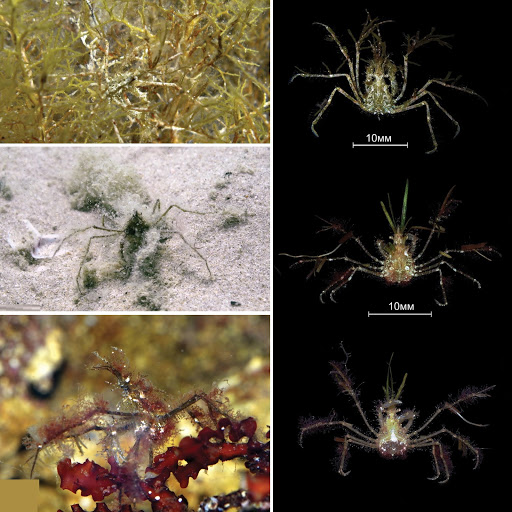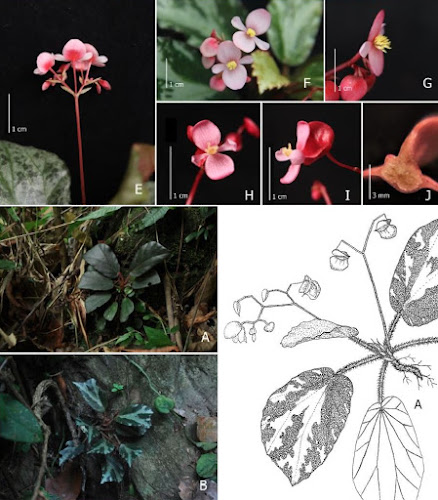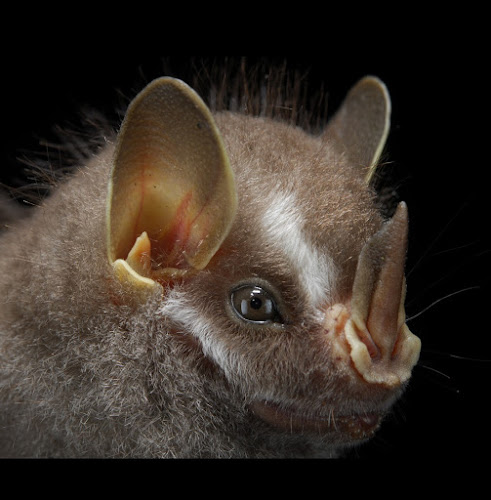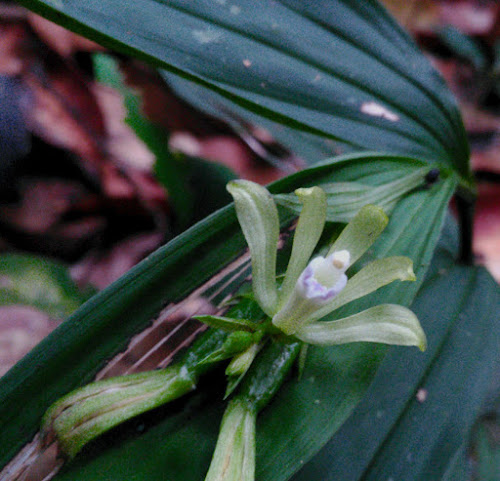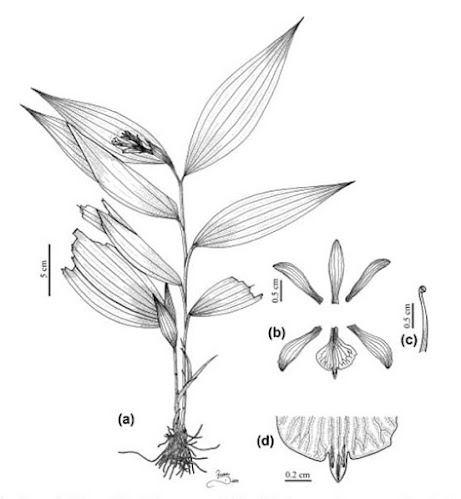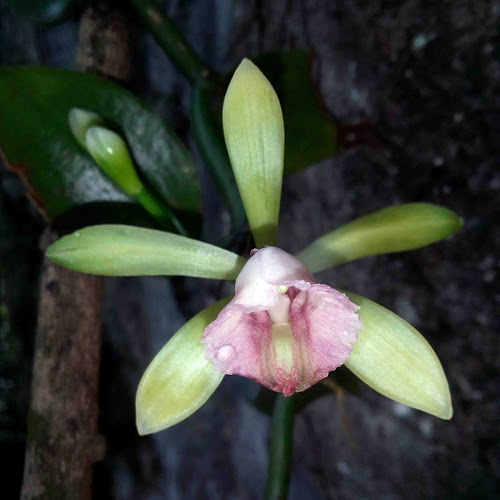[Most Recent Entries] [Calendar View]
Monday, September 7th, 2020
| Time | Event | ||||||
| 7:33a | [Crustacea • 2020] Review of Macropodia (Decapoda, Inachidae) in the Black Sea supported by Molecular Barcoding Data; with the Redescription of the Type Material, Observations on Ecology and Epibiosis of Macropodia czernjawskii (Brandt, 1880) and Notes on
Abstract Macropodia czernjawskii (Brandt, 1880), described from the Black Sea, was ignored in the regional faunal accounts for more than a century, although it was recognised in the Mediterranean. Instead, M. longirostris (Fabricius, 1775) and M. rostrata (Linnaeus, 1761) were frequently listed for the Black Sea. We selected a lectotype and redescribed the species on the basis of the type series from the Crimean Peninsula and the new material collected in the Black Sea. Historical and new collections, as well as the analysis of publications, indicate that M. czernjawskii is the only Macropodia species occurring in the Black Sea. Molecular barcode (COI gene marker) data show that M. czernjawskii is a species well-diverged from other studied species of the group. Furthermore, M. parva van Noort & Adema, 1985 has very low genetic distances from M. rostrata and M. longipes A. Milne-Edwards & Bouvier, 1899 is indistinguishable from M. tenuirostris (Leach, 1814), using COI sequences. The respective synonimisations, supported by morphological data, are proposed. M. czernjawskii is a Black Sea – Mediterranean endemic occurring also in the neighbouring Atlantic coastal zone of the Iberian Peninsula and occupying shallower depth, compared to other Mediterranean species of Macropodia. As an upper subtidal inshore species, it is particularly specialised in self-decoration and stimulates abundant epibiosis, providing masking and protection. The bulk of epibiosis consists of algae and cyanobacteria. Amongst the 25 autotrophic eukaryote taxa, identified to the lowest possible level, green chlorophytes Cladophora sp. and calcareous rhodophytes Corallinales gen. sp. were most commonly recorded. Non-indigenous red alga Bonnemaisonia hamifera Hariot, first officially recorded at the Caucasian coast of the Black Sea in 2015, was present in the epibiosis of M. czernjawskii in Crimea as early as 2011. Key Words: Majoidea, historical collections, upper subtidal biotopes, endemism, Mediterranean, egg size, epibiosis, non-indigenous species Class Malacostraca Latreille, 1802 Order Decapoda Latreille, 1802 Suborder Pleocyemata Burkenroad, 1963 Infraorder Brachyura Linnaeus, 1758 Section Heterotremata Guinot, 1977 Superfamily Majoidea Samouelle, 1819 Family Inachidae MacLeay, 1838 Macropodia czernjawskii (Brandt, 1880) Diagnosis: Cephalothorax, pleon and thoracopods densely and unevenly setose. Rostral spines covered with large curled setae, moderately ascending, slightly convex to straight in lateral view, somewhat over-reaching (in males), reaching or nearly reaching end of antennal peduncle, usually about as long as 30% of total carapace length in females and about 35% in males. Epistome trapezoidal with two conspicuous lateral spinules on each side. All carapace protuberances, spines and tubercles setose. Gastric region with a pair of lateral protogastric protuberances or spines, a pair of mesogastric tubercles and robust median metagastric spine of moderate height, directed slightly anteriorly or straight dorsally. Two conspicuous hepatic protuberances on each side, lower being most robust. Pterygostomial process seen dorsally in males, but barely in females. Cardiac region elevated, with strong median obtuse spine directed slightly posteriorly. Intestinal region with median spiniform tubercle at border with cardiac region. Basal antennal segment with three (in some specimens two or four) spines. Merus of P 2–5 with a distal dorsal spine. Dactyli of P 4 and 5 little narrower than propodi, markedly curved (sickle-shaped), with a dense row of robust sharp spinules located on flexor margin, along with setae; adductor face with few setae and mostly naked. Ecology and epibiosis: In the Black Sea, the species was recorded between 0.5 and 9–12.8 m depth, but mostly within the upper 5–6 m on various substrates from rock and boulders to sand (Fig. 10e, f), in growing or detached aquatic vegetation, i.e. Ulva sp., filamentous green algae, Cystoseira sp., red algae (Fig. 10d). One male was also recorded in a community dominated by clams Chamelea gallina (Linnaeus, 1758), hermit crabs Diogenes pugilator (Roux, 1829) and predatory whelks Rapana venosa (Valenciennes, 1846) at about 10 m depth, where macrophyte vegetation is generally lacking, according to the underwater observations by the authors. It is very difficult to spot the crabs when they are hiding in algae (Fig. 10a). However, the males (but not females) were repeatedly observed walking on bare substrate, although a short distance from shelters and being decorated with pieces of algae (Fig. 10c). ... Vassily A. Spiridonov, Ulyana V. Simakova, Sergey E. Anosov, Anna K. Zalota and Vitaly A. Timofeev. 2020. Review of Macropodia in the Black Sea supported by Molecular Barcoding Data; with the Redescription of the Type Material, Observations on Ecology and Epibiosis of Macropodia czernjawskii (Brandt, 1880) and Notes on other Atlanto-Mediterranean Species of Macropodia Leach, 1814 (Crustacea, Decapoda, Inachidae). Zoosystematics and Evolution. 96(2): 609-635. DOI: 10.3897/zse.96.48342 | ||||||
| 7:33a | [Botany • 2020] Begonia trucatifolia (Begoniaceae, section Baryandra) • A New Species of Begonia from San Vicente, Palawan Island, the Philippines Abstract A new species of Begonia sect. Baryandra with 2-locular ovary and cucullate abaxial wing from the town of San Vicente, Palawan is described and illustrated. The new species, Begonia trucatifolia, is diagnosed against the morphologically similar B. blancii. Both species are endemic to Palawan and are similar in having spathulate leaves, 4-tepaled staminate & pistillate flowers and bilocular ovaries, but B. truncatifolia is significantly different in being comparatively smaller in size (stipules, lamina and inflorescences) and having obtusely rounded to acute lamina apices. The new species is proposed Critically Endangered following the criteria set by the IUCN. Keywords: Begonia blancii, Critically Endangered, Eudicots, Malesia, riparian, San Vicente, taxonomy Begonia trucatifolia R.Bustam. M.Pranada, Tandang, & Y.P.Ang Rene Alfred Anton Bustamante, Danilo N. Tandang, MC Andrew K. Pranada and Yu Pin Ang. 2020. Begonia truncatifolia (Begoniaceae, section Baryandra), A New Species from Palawan Island, the Philippines. Phytotaxa. 458(3); 215–222. DOI: 10.11646/phytotaxa.458.3.4 | ||||||
| 7:45a | [Mammalogy • 2020] Systematics of Big-eyed Bats, Genus Chiroderma Peters, 1860 (Chiroptera: Phyllostomidae)
Abstract We present a revision of the Neotropical bat genus Chiroderma, commonly known as big-eyed bats. Although species of Chiroderma have a wide distribution from western México to southern Brazil, species limits within Chiroderma are not clearly defined, as attested by identification errors in the literature, and there is no comprehensive revision of the genus that includes morphological and molecular data. Our review is based on phylogenetic analyses of two mitochondrial (COI and CYTB) and two nuclear (RAG2 and DBY) genes, coalescence analyses of mitochondrial genes, and morphological analyses including type specimens of all named taxa. We recognize seven species in three clades: the first clade includes (1) C. scopaeum Handley, 1966, endemic to western México and previously considered a subspecies of C. salvini; and (2) C. salvini Dobson, 1878, a taxon associated with montane forests, distributed from México to Bolivia; the second clade includes (3) C. improvisum Baker and Genoways, 1976, endemic to the Lesser Antilles, and (4) C. villosum Peters, 1860, widely distributed on the continental mainland and polytypic, with subspecies C. v. villosum and C. v. jesupi; and the third clade includes (5) the polytypic C. doriae Thomas, 1891, with C. d. doriae distributed in eastern Brazil and Paraguay, and C. d. vizottoi, occurring in northeastern Brazil; (6) C. trinitatum Goodwin, 1958, distributed from Trinidad to Amazonia; and (7) C. gorgasi Handley, 1960, distributed from Honduras to trans-Andean South America, previously considered a subspecies of C. trinitatum. Keywords: Mammalia, Chiroderma gorgasi, Chiroderma scopaeum, species delimitation, taxonomy, Vampyressina Guilherme S. T. Garbino, Burton K. Lim and Valéria Da C. Tavares. 2020. Systematics of Big-eyed Bats, Genus Chiroderma Peters, 1860 (Chiroptera: Phyllostomidae). Zootaxa. 4846(1); 1-93. DOI: 10.11646/zootaxa.4846.1.1 | ||||||
| 10:27a | [Botany • 2020] Palmorchis triquilhada (Orchidaceae; Neottieae) • A New Species from the Brazilian Amazon
Abstract The Neotropical genus Palmorchis (Orchidaceae) contains 38 species distributed from Nicaragua to Peru, including northern Brazil. The genus is characterized by whitish or greenish tubular flowers with morphologically similar sepals and petals, a generally trilobed lip basally adnated to the gynostemium, and a gynostemium with a more or less curved apex. Here, a new species of Palmorchis belonging to the informal Palmorchis sobralioides group is described and illustrated from the state of Pará in the Brazilian Amazon, and its taxonomic affinities are discussed. Palmorchis triquilhada is close to P. sobralioides, differing basically by having a smaller size, pubescent leaves, deltoid and pubescent floral bracts, pubescent lip with ciliate margin, and a three‐keeled lanceolate median lobe without calli and with an acute apex. A description, photos, illustrations and ecological and taxonomic comments are provided for the species, as well as an identification key for related species. Keywords: endemism, Epidendroideae, Neotropical, orchid, taxonomy
Palmorchis triquilhada Ferreira Filho & Barberena sp. nov. Etymology: The specific epithet is a reference to the three keels present on the lip of the species. Ricardo Leite Ferreira Filho and Felipe Fajardo Villela Antolin Barberena. 2020. Palmorchis triquilhada sp. nov. (Orchidaceae; Neottieae) from the Brazilian Amazon. Nordic Journal of Botany. DOI: 10.1111/njb.02740 | ||||||
| 10:43a | [Botany • 2020] Vanilla tiendatii (Orchidaceae) • A New Climbing Orchid from Vietnam
Abstract Vanilla tiendatii, discovered in limestone mountain area of Quang Binh Province in Northern Vietnam, is described as a species new for science. Morphologically this species appears to be closely related to V. yesiniana and V. albida, but well differs in the leaf shape, flower color, lip densely papillate-hairy at apex, and column fimbriate-hairy in the basal half. The key for identification of Vanilla species occurring in Vietnam is provided. Keyword: New species, Orchidaceae, plant diversity, plant taxonomy, Vanilla, Vietnam
Vanilla tiendatii Vuong, V.H. Bui, V.S. Dang & Aver., sp. nov. Etymology: The species is named after Mr. Bui Tien Dat, an orchid enthusiast who collected material used for the preparation of the type specimen. Habitat: Found growing as a lithophytic creeping vine, in both open and shady rather dry limestone forest together with Rhaphidophora species. Distribution: Know from two locations in Quang Binh Province (Minh Hoa District, Trung Hoa and Yen Hoa communes). Minh Ty Nguyen, Leonid V. Averyanov, Van Huong Bui, Nghia Son Hoang, Van Son Dang and Ba Vuong Truong. 2020. Vanilla tiendatii, A New Climbing Orchid from Vietnam. Taiwania. 65(4); 438-442. DOI: 10.6165/tai.2020.65.438 |
| << Previous Day |
2020/09/07 [Calendar] |
Next Day >> |
